
Ruthenian and Ruthene are exonyms of Latin origin, formerly used in Eastern and Central Europe as common ethnonyms for East Slavs, particularly during the late medieval and early modern periods. The Latin term Rutheni was used in medieval sources to describe all Eastern Slavs of the Grand Duchy of Lithuania, as an exonym for people of the former Kievan Rus', thus including ancestors of the modern Belarusians, Rusyns and Ukrainians. The use of Ruthenian and related exonyms continued through the early modern period, developing several distinctive meanings, both in terms of their regional scopes and additional religious connotations.

The history of Christianity in Ukraine dates back to the earliest centuries of the history of Christianity, to the Apostolic Age, with mission trips along the Black Sea and a legend of Andrew the Apostle even ascending the hills of Kiev. The first Christian community on territory of modern Ukraine is documented as early as the 9th century with the establishment of the Metropolitanate of Gothia, which was centered in the Crimean peninsula. However, on territory of the Old Rus in Kiev, Christianity became the dominant religion since its official acceptance in 989 by Vladimir the Great, who brought it from Byzantine Crimea and installed it as the state religion of medieval Kievan Rus (Ruthenia), with the metropolitan see in Kiev.
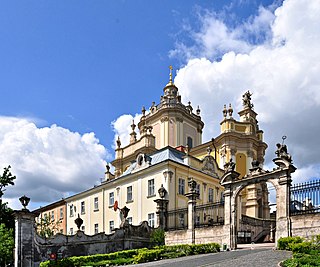
The Ukrainian Greek Catholic Church (UGCC) is a major archiepiscopal sui iuris ("autonomous") Eastern Catholic church that is based in Ukraine. As a particular church of the Catholic Church, it is in full communion with the Holy See. It is the second-largest particular church in the Catholic Church after the Latin Church. The major archbishop presides over the entire Church but is not distinguished with the patriarchal title. The incumbent Major Archbishop is Sviatoslav Shevchuk.
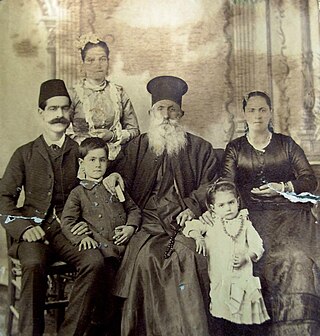
Clerical marriage is the practice of allowing Christian clergy to marry. This practice is distinct from allowing married persons to become clergy. Clerical marriage is admitted among Protestants, including both Anglicans and Lutherans. Some Protestant clergy and their children have played an essential role in literature, philosophy, science, and education in Early Modern Europe.
Galician Russophilia or Moscophilia was a cultural and political movement largely in the Kingdom of Galicia and Lodomeria, Austria-Hungary. This ideology emphasized that since the Eastern Slavic people of Galicia were descendants of the people of Kievan Rus' (Ruthenians), and followers of Eastern Christianity, they were thus a branch of the Russian people. The movement was part of the larger Pan-Slavism that was developing in the late 19th century. Russophilia was largely a backlash against Polonisation and Magyarisation that was largely blamed on the landlords and associated with Roman Catholicism.

Anatole Vakhnianyn, was a Ukrainian composer, political and cultural figure, teacher, and journalist.
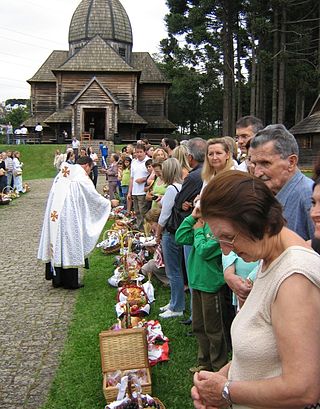
Ukrainian Brazilians are Brazilian citizens born in Ukraine, or Brazilians of Ukrainian descent who remain connected, in some degree, to Ukrainian culture.
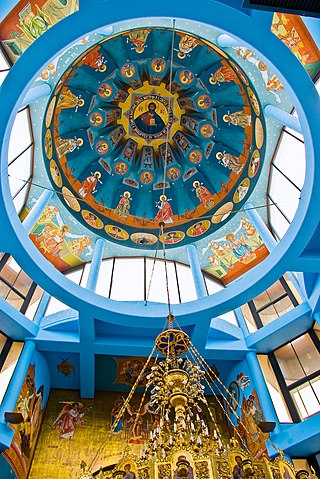
The Conversion of Chełm Eparchy was the forced conversion of the Eparchy of Chełm–Belz that took place between January and May 1875. It was the last eparchy of the Ruthenian Uniate Church that remained on the territory of the Russian Empire following the partitions of Poland. The episcopal seat of the eparchy was in the city of Chełm (Kholm) in Congress Poland. Adherents and clergy were forced to join the Russian Orthodox Church.
The Christian Social Movement in Ukraine was a political movement that existed in Western Ukraine from the end of the 19th century until the 1930s.

On the basis of a secret clause of the Molotov–Ribbentrop Pact, the Soviet Union invaded Poland on September 17, 1939, capturing the eastern provinces of the Second Polish Republic. Lwów, the capital of the Lwów Voivodeship and the principal city and cultural center of the region of Galicia, was captured and occupied by September 22, 1939 along with other provincial capitals including Tarnopol, Brześć, Stanisławów, Łuck, and Wilno to the north. The eastern provinces of interwar Poland were inhabited by an ethnically mixed population, with ethnic Poles as well as Polish Jews dominant in the cities, and ethnic Ukrainians dominating the countryside and overall. These lands now form the backbone of modern Western Ukraine and West Belarus.
The Ukrainian Radical Party (URP) (Ukrainian: Українська радикальна партія, УPП, Ukraiinśka Radykaľna Partiia), founded in October 1890 as Ruthenian-Ukrainian Radical Party and based on the radical movement in western Ukraine dating from the 1870s, was the first modern Ukrainian political party with a defined program, mass following, and registered membership. It advocated socialism, increased rights for Ukrainian peasants, anti-clericalism and secularism.
The Ukrainian Cooperative Movement was a movement that addressed the economic plight of the Ukrainian people through the creation of financial, agricultural and trade cooperatives that enabled Ukrainians to pool their resources, to obtain less expensive loans and insurance, and to pay less for products such as farm equipment. The cooperatives played a major role in the social and economic mobilization of the Ukrainian people, most of whom were peasants. First begun in 1883, by 1939 cooperatives had 700,000 members in western Ukraine, employing 15,000 Ukrainians. The cooperatives were shut down by the Soviet authorities when western Ukraine was annexed by the Soviet Union in 1939. However, they continue to exist and flourish among Ukrainian emigrants and their descendants in North and South America, Europe and Australia—in Ukrainian diaspora.

Maxim Timofeyevich Sandovich is a New Martyr and Orthodox saint. known as saint hieromartyr Maxim of Gorlice. He is the protomartyr of the Lemko people.
On August 18, 1914, the Russian Empire invaded the Austrian Crownland of Galicia. On August 19, the Imperial Russian Army defeated the Austro-Hungarian Army, advanced 280–300 kilometers into the territory of Austria-Hungary and captured most of eastern Galicia. The principal city, Lemberg fell into Russian hands on September 3. Eastern Galicia had a population of approximately 4.8 million people.
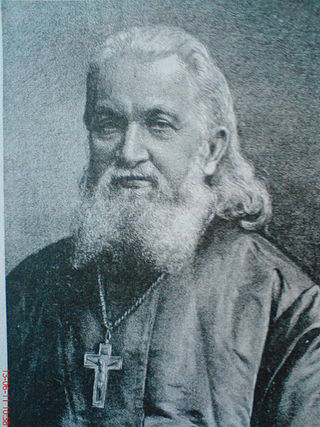
Ivan Grigorievitch Naumovich, also romanized as Ivan Hryhorovych Naumovych, was a priest, member of parliament, writer, and major figure in the Russophile movement in western Ukraine. His article, A Glimpse into the Future, was considered the most important manifesto of Galician Russophilism.
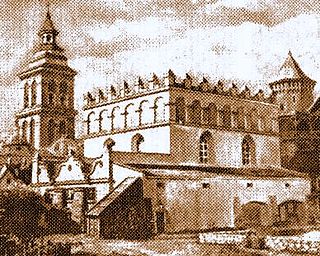
Eastern Galicia was the heartland of the medieval Kingdom of Galicia–Volhynia, currently spread over the provinces of Lviv, Ivano-Frankivsk, and Ternopil in modern western Ukraine. Along with Poles and Ukrainians, Jews were one of the three largest ethnic groups in Eastern Galicia with almost 900,000 people by 1910. From the late 18th century until the early 20th century eastern Galicia had the largest concentration of Jews of any region in Europe.

Joseph Sembratovych was the Metropolitan Archbishop of the Ukrainian Greek Catholic Church from 1870 until his resignation in 1882.
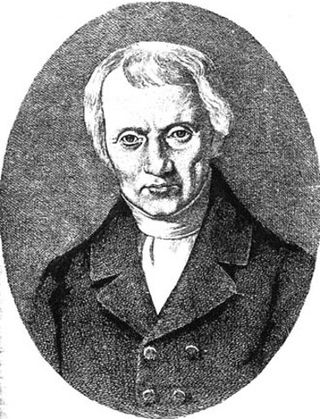
Denis Ivanovych Zubrytsky, was the first Ukrainian historian in Galicia and a major early figure in the Galician Russophile movement.

The shlyakhta were a noble class of Ruthenians in what is now Western Ukraine that enjoyed certain legal and social privileges. Estimates of their numbers vary. According to one estimate, by the mid-19th century, there were approximately 32,000 Ukrainian nobles in the western Ukrainian territory of Galicia, over 25% of whom lived in 21 villages near the town of Sambir. They comprised less than 2% of the ethnic Ukrainian population. Other estimates place the number of nobles at 67,000 people at the end of the 18th century and 260,000 by the end of the 19th century, or approximately 6% of the ethnic Ukrainian population. The nobles tended to live in compact settlements either in villages populated mostly by nobles or in particular areas of larger villages.

John-Paul Himka is an American-Canadian historian and retired professor of history of the University of Alberta in Edmonton. Himka received his BA in Byzantine-Slavonic Studies and Ph.D. in History from the University of Michigan in 1971 and 1977 respectively. The title of his Ph.D. dissertation was Polish and Ukrainian Socialism: Austria, 1867–1890. As a historian Himka was a Marxist in the 1970s–80s, but became influenced by postmodernism in the 1990s. In 2012 he defined his methodology in history as "eclectic".



















